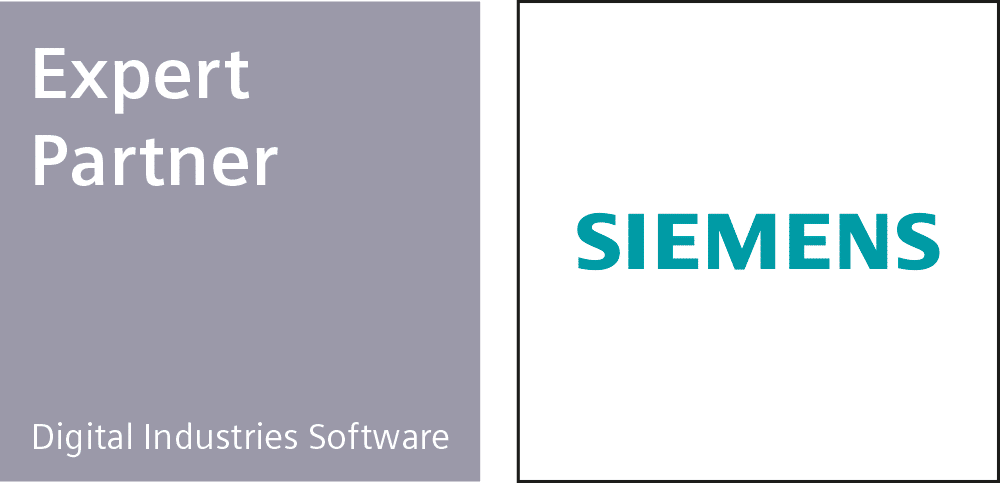What is PLM?
Product Lifecycle Management (PLM) is a concept for the seamless integration of all information that spans the lifecycle of a product. PLM combines the methods and processes of the entire product development with the organisational structure of a company into a common 'knowledge pool'. The concept of collective product lifecycle management was developed from Product Data Management (PDM) and the Digital Factory. While PDM solutions manage data that describes what individual parts a product consists of, the PLM solution also includes information about how a product is created and what dependence exist between all information. In order to know how a product is created, it is no longer enough to simply manage the classic data from ECAD and MCAD designs. PLM extends the information to be managed with data from calculation and simulation (CAE), production planning (routings, resources used) and PPC (Production Planning and Control). As a result, a PLM solution not only supports the product development departments, but also other areas such as sales, logistics, service and maintenance, just to name a few.
PLM is a seismic shift
Increased product complexity and more and more variants of a product, in ever shorter cycles , are major challenges in today’s market. Confronting these challenges conventionally and trying to find an 'island solution' for every challenge is very complex and time consuming.
Many examples show that at some point, higher goals can only be achieved by embracing new methods and techniques.

In the case of Product Lifecycle Management, this means to gradually establish a global approach to the entire lea product development process with modern methods and tools.
How does PLM work?
A PLM solution controls and documents the complete product development process via a consistent backbone of information. Existing commercial processes are supported by PLM methods, but not integrated into the PLM environment.
The clear focus of a PLM solution is to provide the best possible support to the (technical) product development process. As a rule, a PLM solution does not replace existing processes or steps within product creation, but primarily provides all the necessary central information. This saves time consuming searches for information and reduces media breaks, meaning the conversion of data and (manual) importing into other systems. By using a common source of information, many non-profitable tasks can be simplified or automated. The direct availability of all information within the PLM solution eliminates the need for "synchronization points" (points at which work progresses from one department to the next). Downstream processes can start earlier and have a positive influence on the entire product development. For example, it can be recognized early on if a component cannot be produced in the way the designer thought. The parallelization of processes helps to shorten the entire product development process and thereby increases quality even further.
For a PLM solution to work as predicted, many factors have to work together. As mentioned in the previous section, a PLM solution focuses on the product development process. However, the product creation process is often a creative, if not chaotic process, carried out by equally creative up to chaotic employees. For this reason, the most important issue when implementing a PLM solution is to help individuals to be relieved of 'non-profitable’ activities such as finding parts or documents as much as possible. Only in this way can the acceptance of a PLM solution amongst employees be achieved. The second most important factor is the product development process itself. In the course of PLM introduction, it is often the case that the opportunity is used for process optimisation. Again, it is important that the focus is on the employee and the optimal flow of information. The last, but not insignificant step is the selection of software suitable to support the processes and the employees.
A PLM solution only works as well as it connects the processes, tools and organization.
PLM and ERP
Enterprise Resource Planning (ERP) describes the entrepreneurial task of planning and controlling resources such as capital, personnel, operating resources and materials, information and communication technology as well as IT systems in a timely manner and according to the purpose of the company.
The distinction between PLM and ERP solutions is that the PLM solution primarily contains technical processes and information, while the ERP system mainly contains the administrative, commercial processes and information.
As a rule, the strict separation cannot always be kept, since PLM and ERP have a very high degree of overlap, especially in process planning. Here it is extremely important to identify which system is responsible for which information. Various projects have shown that the creative planning work is better carried out by systems based in the PLM world with their results then being transferred to the ERP system for production control.

Figure: Interaction of PLM, ERP and MES within a company
PLM and MES
The third large pillar in a manufacturing company is MES (Manufacturing Execution System). With MES orders are scheduled, workflow is tracked and logged. In short, MES controls the factory.
From the developers point of view, which are the users of the PLM system, a direct connection to MES is a logical step. It enables information such as conversions, new machines, etc. to be taken into account into the plans for the new products directly and without any round-about ways. Simulations can also be displayed much more accurately if the current state of a creation is known in the planning stages.
PLM and ALM
Why ALM and PLM should be used together
Software has rapidly overhauled the previous prioritisation of hardware in the product development process, especially for technologically complex products and industries such as automotive, aerospace and defence, as well as the manufacture of medical instruments. Today, technology manufacturers generally use Product Lifecycle Management (PLM) solutions to speed up time-to-market, increase process efficiency, improve collaboration, and meet compliance requirements.
However, in the context of the product manufacturing process conventional PLM systems generally manage software as a "component" and have difficulty in administering the complex software development processes. Software has its own specific lifecycle, with other information to manage, other collaboration processes and methods as well as specifications and elements. This lifecycle has so far been neglected by conventional PLM solutions.
To successfully launch high quality software controlled products, manufacturers have to go beyond their conventional standalone PLM or ALM system. They must actively seek an integrated solution that enables a complete set of hardware and software product requirements and supports the collaboration of multiple disciplines to ensure end-to-end management of the software and hardware components.
How can TRIAS optimally implement PLM for you?
Product Lifecycle Management is not software that you can just take off the shelf, install, and then work with it. PLM is a framework that offers methods, tools and processes to support a modern product development process.
A clever combination of the individual framework elements enables tailor-made solutions that optimally support the company product development process. The main focus must be on maximizing the support of employees in their daily processes. Only when employees fully accept the solution can the expectations be met.
The TRIAS Process
TRIAS offers the full process spectrum - from selection to support and implementation of customized PLM solutions.
At every stage employees and company processes remain the centre of attention.
With our proven approach to defining a PLM based product development process, through customizing the PLM solution, supporting project management and coaching during the implementation phase, we can develop your optimal PLM solution.



























